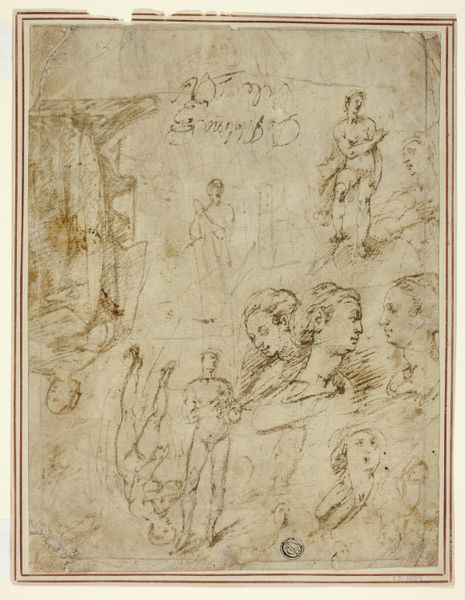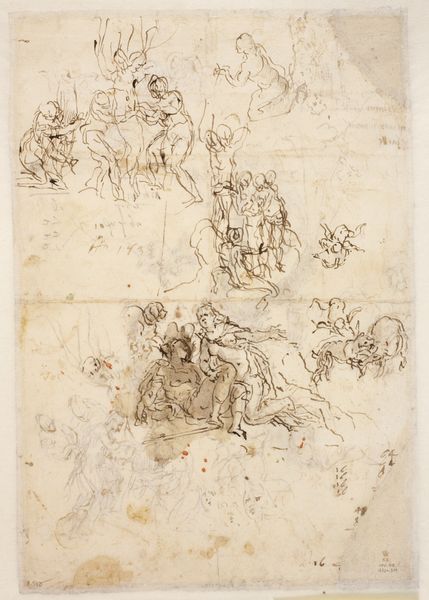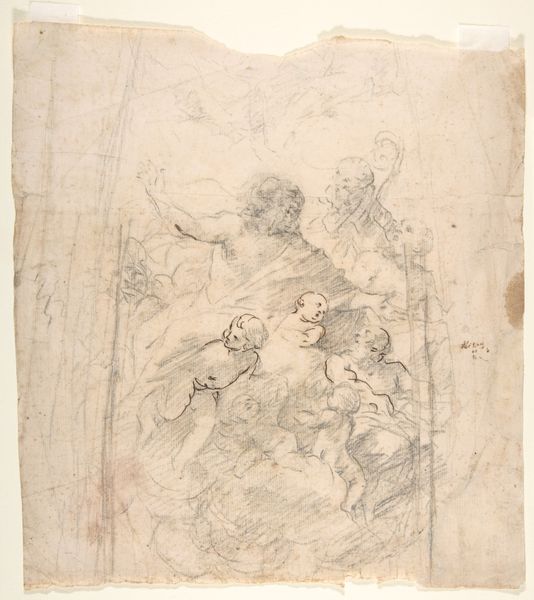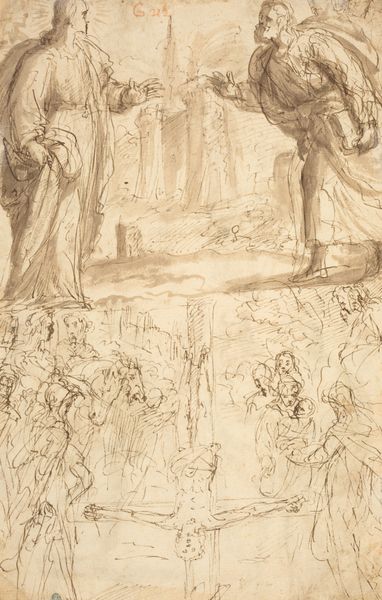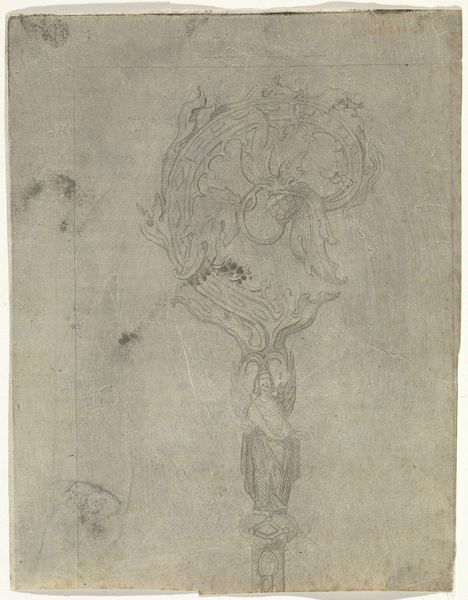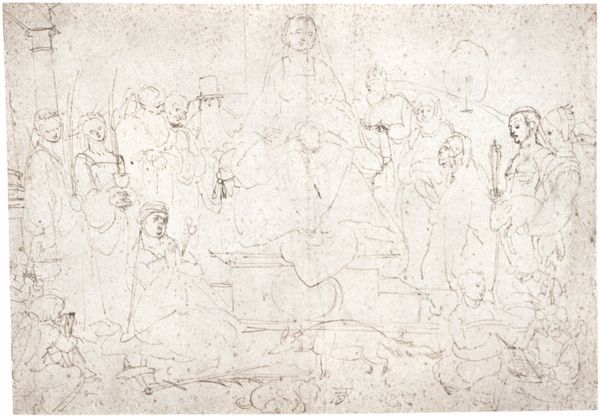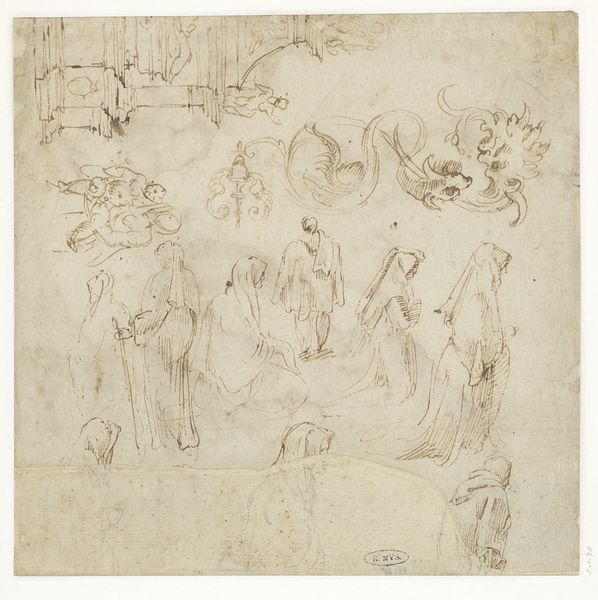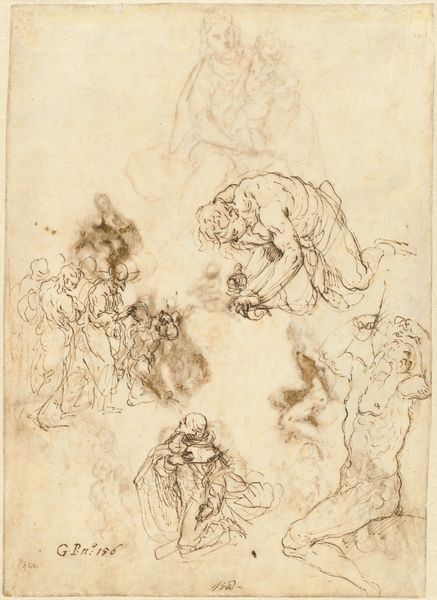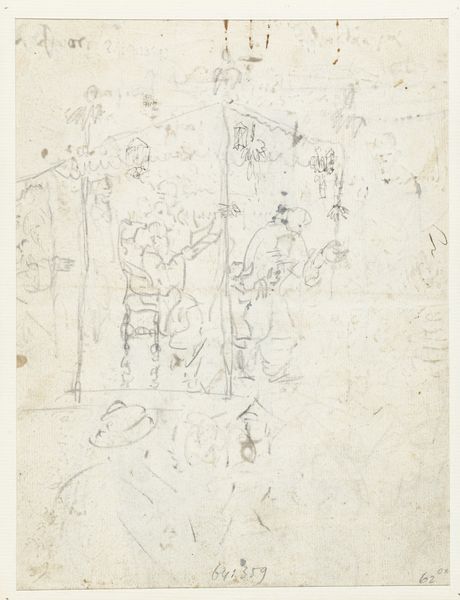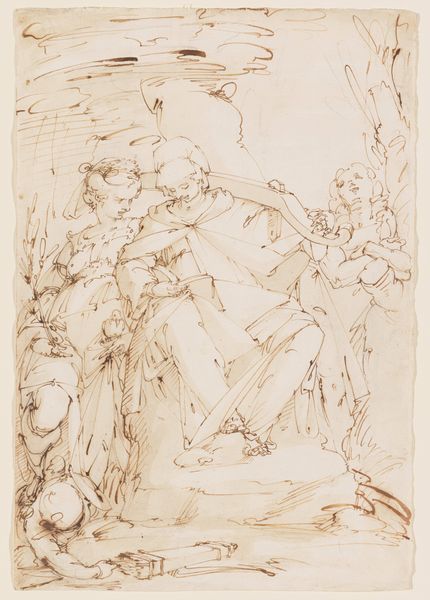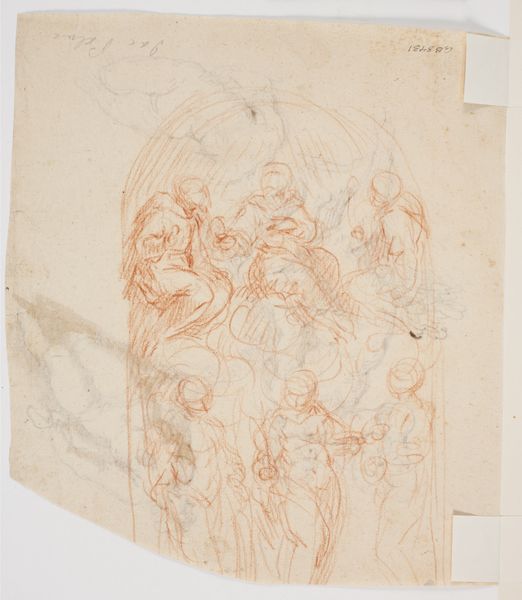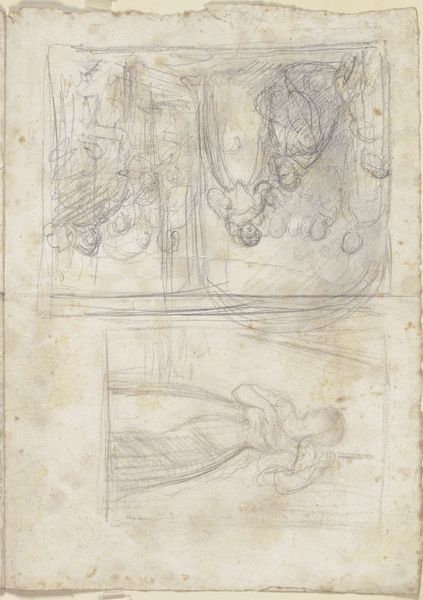
drawing, paper, ink, pen
#
portrait
#
drawing
#
medieval
#
ink painting
#
mannerism
#
figuration
#
paper
#
ink
#
pen
Dimensions: 256 × 159 mm
Copyright: Public Domain
Editor: So, this is Battista Franco's "Sketches of Figures," dating from around 1540 to 1560, a pen and ink drawing on paper. The figures seem so fluid and dynamic, yet unfinished. How do you interpret this work, considering the social context of its time? Curator: I see this drawing as a powerful reflection of Mannerist ideals in a period of great religious and political upheaval. Franco, working in mid-16th century Italy, was navigating a world where the Catholic Church's authority was increasingly challenged. Do you notice how the figures seem caught in moments of ambiguous emotion, almost theatrical? Editor: Yes, their poses are exaggerated, even unsettling. Curator: Exactly. This emotional intensity, this *sprezzatura*, is a hallmark of Mannerism. It deviates sharply from the harmony and balance that defined the Renaissance. Considering the Counter-Reformation brewing, could these figures represent a sense of unease or a questioning of established norms? Are these displays of masculinity designed to portray virility and power? Editor: That's a fascinating point. I hadn't thought about the political undertones so explicitly. Maybe this drawing isn't just about artistic style, but about reflecting a society grappling with shifts in power. Curator: Precisely. The fragmented composition and the exaggerated forms invite us to consider what societal fragmentation may mean, particularly through an intersectional lens focusing on class and gender. The very act of sketching, of leaving figures "unfinished," could symbolize a resistance to rigid dogmas. How can we contextualize these male figures within societal structures? Editor: I think understanding the Mannerist style through a lens of social and political anxiety gives so much more weight to what's on the page. I initially thought it was just a study of form. Curator: And now you recognize how form is also deeply informed by the social currents of its time, becoming a vehicle for exploring anxieties and challenging dominant ideologies. I learned how useful it is to look at history through the figures depicted in art.
Comments
No comments
Be the first to comment and join the conversation on the ultimate creative platform.
